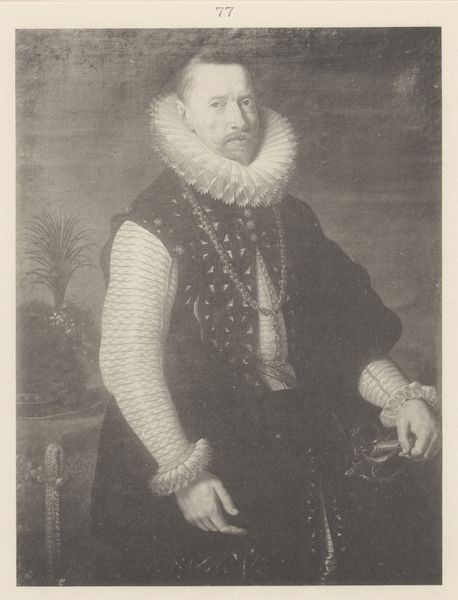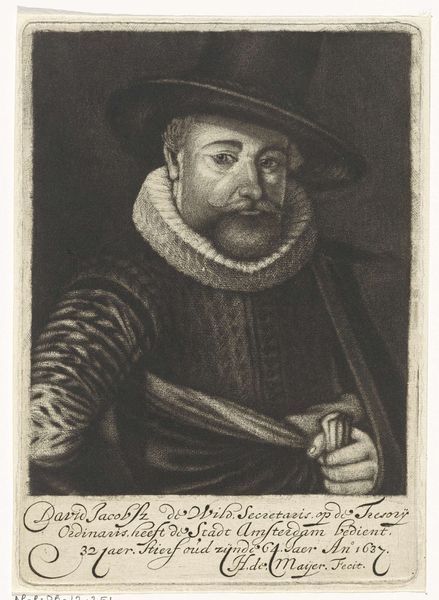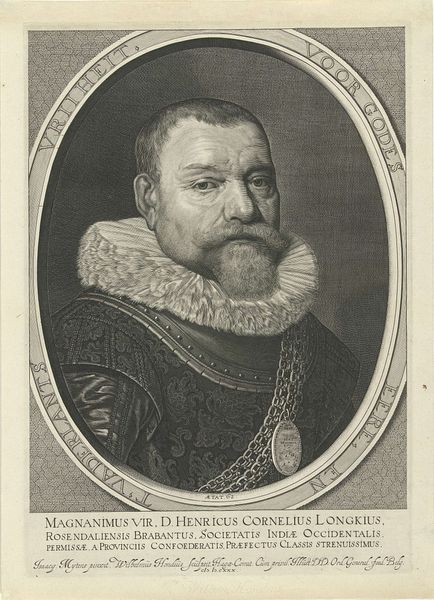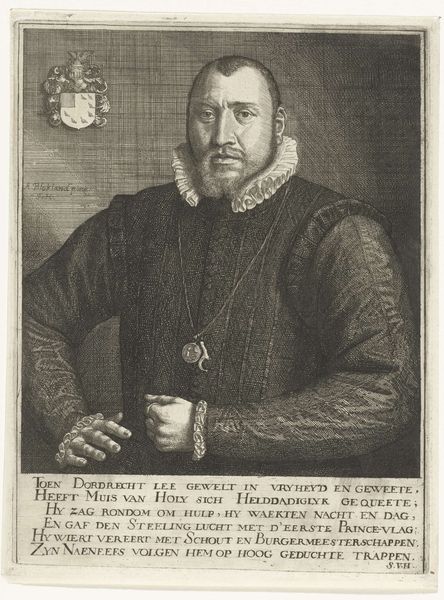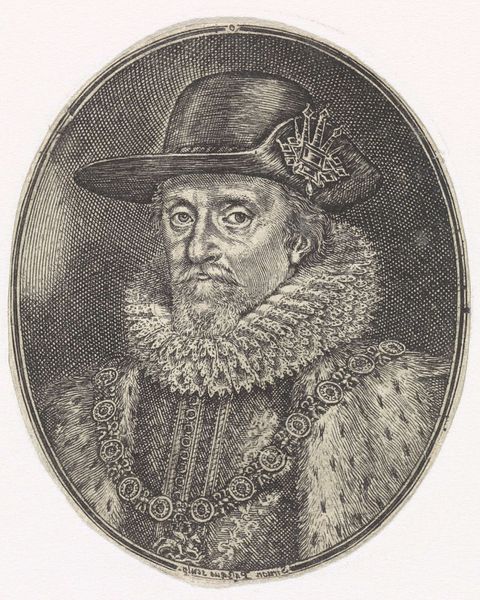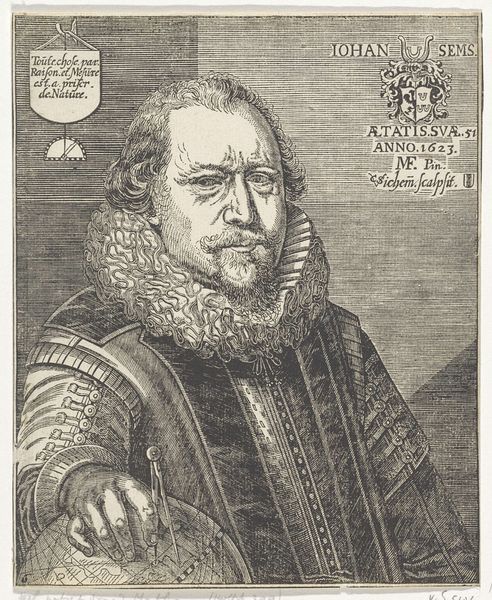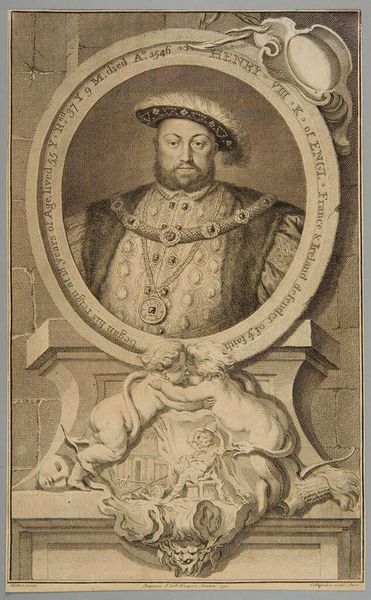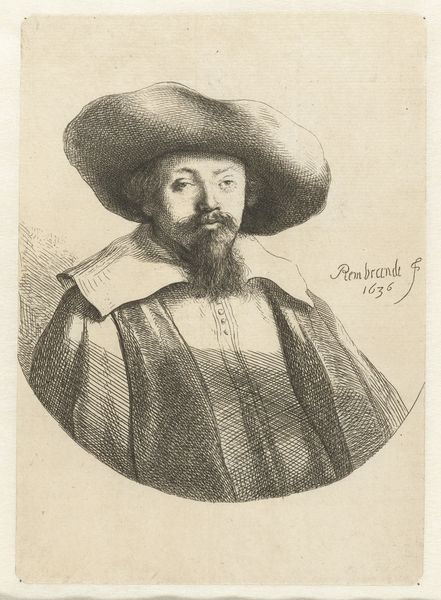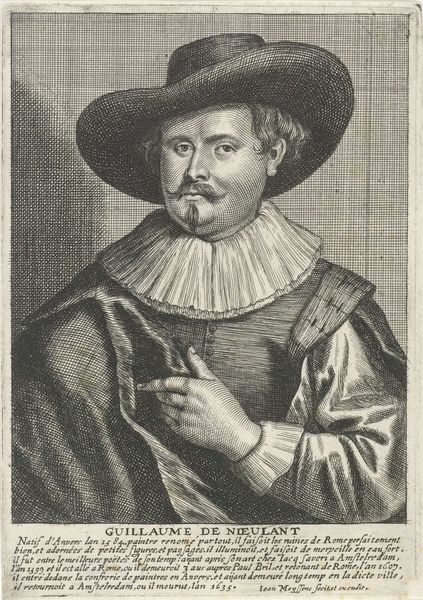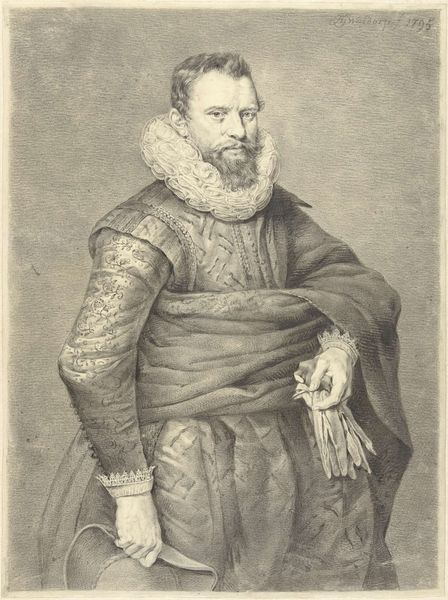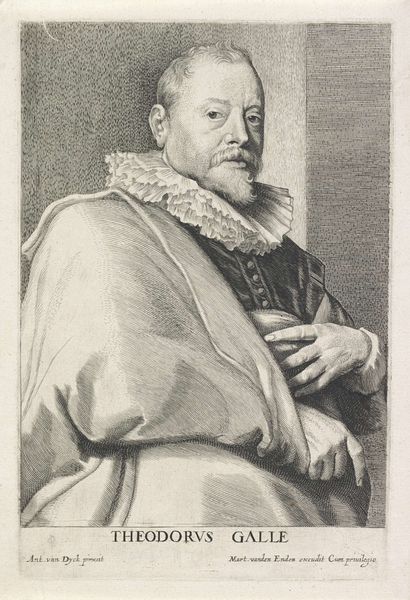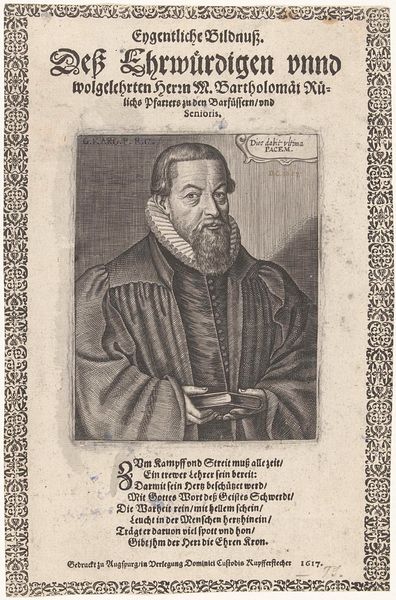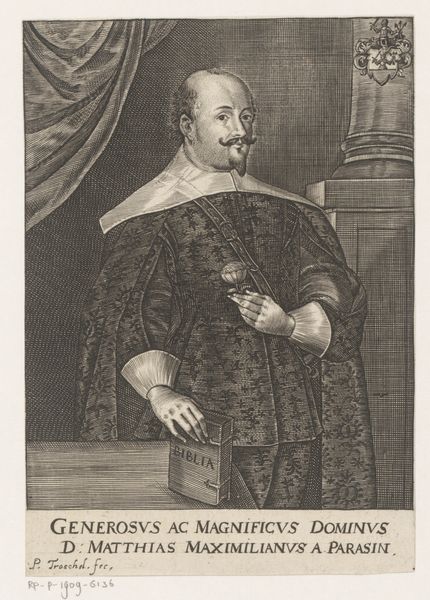
painting, oil-paint, canvas
#
portrait
#
self-portrait
#
baroque
#
portrait
#
painting
#
oil-paint
#
canvas
#
classicism
#
black and white
#
history-painting
#
academic-art
#
realism
Dimensions: 129 cm (height) x 95.5 cm (width) (Netto)
Curator: Here we have Cornelis van der Voort’s “Portrait of a 38-Year-Old Man,” painted in 1622. It’s an oil on canvas and resides here at the SMK, Statens Museum for Kunst. Editor: My immediate response is the starkness of the high contrast, although it’s a somber piece, that pleated ruff seems to almost jump from the canvas! Curator: That ruff is absolutely a signifier. During this period, elaborate garments like that were social signals, visual markers of status within a highly stratified society. Van der Voort’s strategic inclusion of it speaks to the importance of image and presentation in securing position and maintaining societal norms. Editor: And observe the geometry: the strict lines of his dark attire, offset only by the concentric circles formed by his collar—it creates a visually striking pattern, no? It pulls you right into the center and emphasizes his face. Curator: Right. And he would’ve been hyper-aware of the implications of depicting a man of his station clutching a clutch of budding flowers! I surmise that this man would have chosen the blooms quite carefully—their shapes, colours, and rarity—all imbued with deeper meaning. It serves as an immediate advertisement of prosperity and cultural awareness! Editor: I see a slightly different interpretation, but it also fits within my Formalist agenda. His features are obscured with light reflected by his face—this isn’t a painting about clear, transparent emotionality—rather, he wants to give you a few subtle clues and then recede into mystery, no? It is the dark portions of the coat, contrasting with his features, that establish emotional tone here! Curator: Maybe so, but the very act of having your portrait done announces the sitter’s investment in shaping his legacy for the eyes of history and future generations. And considering the turbulent religious and political tensions roiling Europe at the time, this declaration might not have been as personal as we moderns think, but very strategic indeed! Editor: Indeed. Even through this rather restricted color palette and deliberate use of shading, it still speaks quite clearly about one’s status and time! Curator: Ultimately, Van der Voort presents to us an arresting reminder of the interwoven personal and political demands inherent in the Dutch Golden Age.
Comments
No comments
Be the first to comment and join the conversation on the ultimate creative platform.

